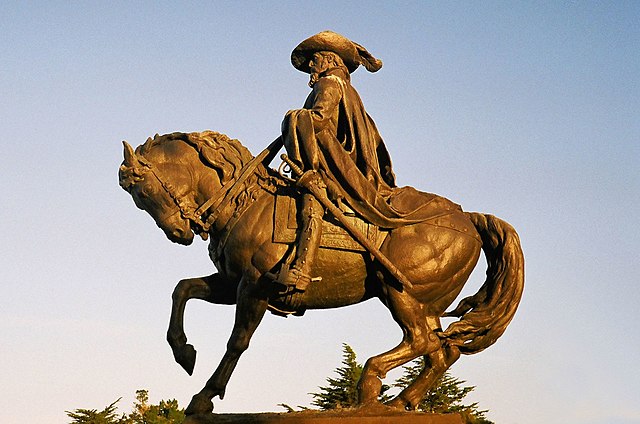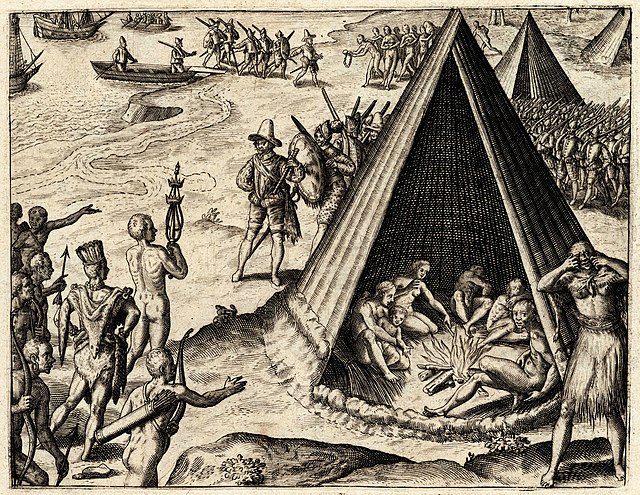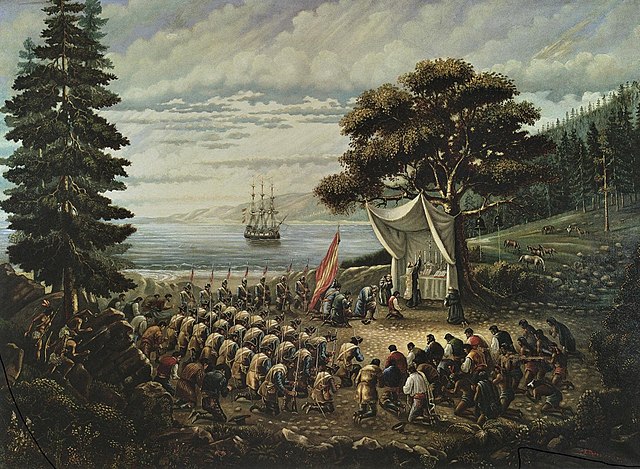Juan Bautista de Anza Bezerra Nieto was an expeditionary leader, military officer, and politician primarily in California and New Mexico under the Spanish Empire. He is credited as one of the founding fathers of Spanish California and served as an official within New Spain as Governor of the province of New Mexico.
Portrait by Fray Orcí, 1774.
Equestrian statue of Anza at Lake Merced, San Francisco, California.
Juan Bautista de Anza, from a portrait in oil by Fray Orsi in 1774
Portrait by Gerald Cassidy.
The history of California can be divided into the Native American period, the European exploration period (1542–1769), the Spanish colonial period (1769–1821), the Mexican period (1821–1848), and United States statehood. California was one of the most culturally and linguistically diverse areas in pre-Columbian North America. After contact with Spanish explorers, many of the Native Americans died from foreign diseases. Finally, in the 19th century there was a genocide by United States government and private citizens, which is known as the California genocide.
Francis Drake's 1579 landing in "New Albion" (modern-day Point Reyes); engraving by Theodor De Bry, 1590.
Mission San Carlos Borromeo de Carmelo, established in 1770, was the headquarters of the Californian mission system from 1797 until 1833.
Gaspar de Portolá served as the first Governor of the Californias and led the famed Portolá expedition of 1769-70.
Junípero Serra conducting the first mass in Monterey Bay in 1770.








